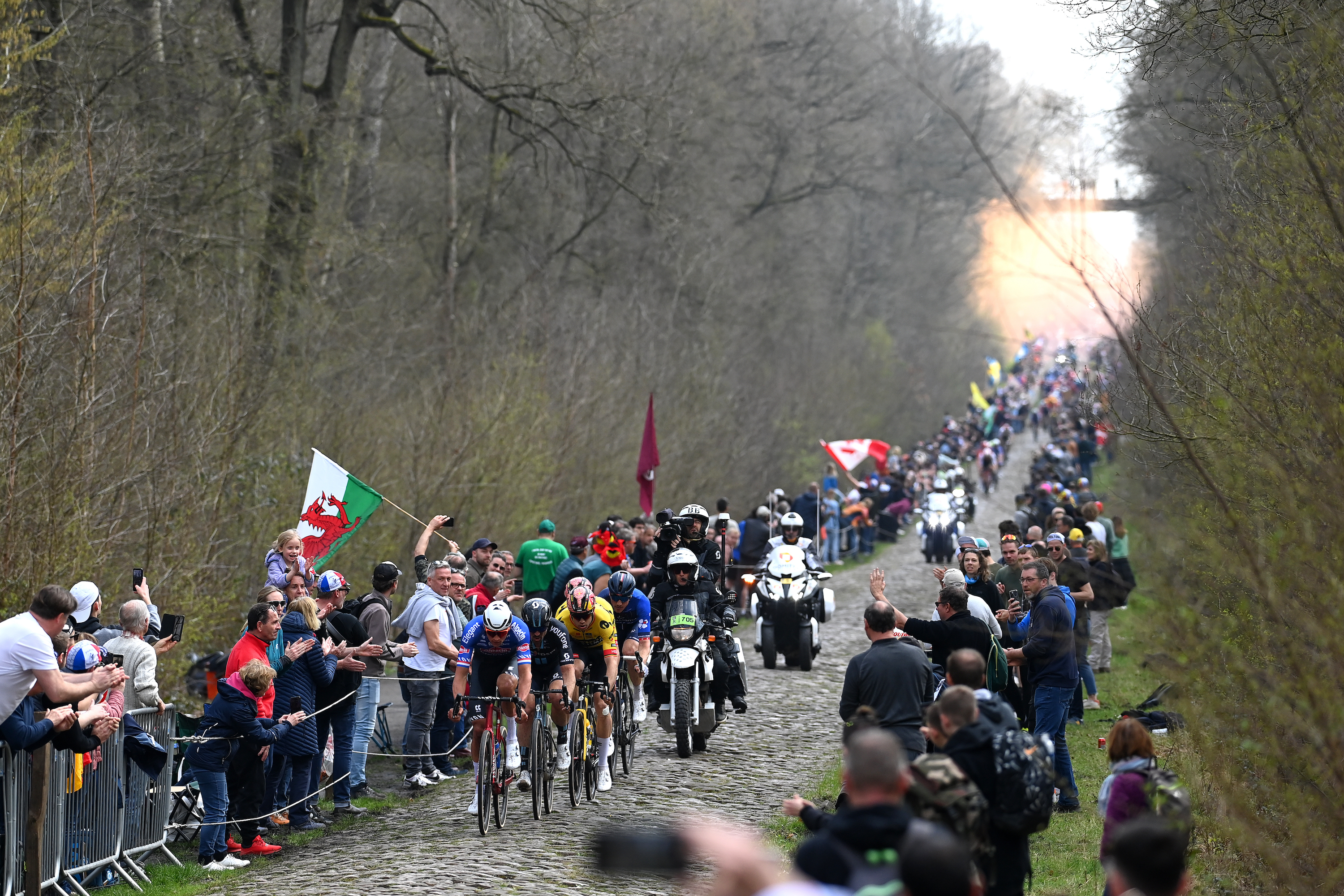
Paris-Roubaix will feature a sharp chicane into the Trouée d'Arenberg in order to avoid a "death trap" run-in, according to the president of the rider's union, the CPA.
However, while the safety measure for the five-star sector, which often features crashes, has been welcomed by many, defending champion Mathieu van der Poel labelled it "a joke".
Plans have been in place for some time to adjust the entrance to the Trouée d'Arenberg, a key sector of the Paris-Roubaix course, with riders given three different options to choose from.
The peloton normally hits the "trench" at 60km/h, with high-speed crashes a regular occurrence. It is the first five-star sector of the men's race, and has therefore been crucial to the outcome of the race. The 2.3km long sector is one of the most brutal of Roubaix.
Cycling Weekly understands that the CPA riders union, who helped orchestrate the change, learned recently that it would not be possible to use a favoured different option this year due to a large surface hole in the road. This route would lead riders through the roads of the Wallers-Arenberg mining museum, slowing them down before hitting the Arenberg.
However, it's understood that the race organiser, the Amaury Sports Organisation [ASO], is committed to ensuring the first choice is possible by next year's edition.
After first being reported by L’Equipe, it was announced on Wednesday evening by the race's organisers, ASO, that the entrance into the five star rated cobbled sector was to be adjusted in order to reduce the speed in which the peloton enters the cobblestones.
Instead of riding straight into the sector at high speeds, riders will now take what has been described as a chicane with the aim of slowing the race down and therefore improving the safety of the race.
Ecco la chicane introdotta all’ingresso della foresta di #Arenberg, appena ufficializzata per la #ParisRoubaix @RaiSport pic.twitter.com/9cJ4p2OmxaApril 3, 2024
The announcement was met with consternation by some including the winner of last year’s men’s race, Van der Poel, who said on X that the final idea was "a joke". Others asked on social media whether riders had even been consulted on the decision.
Meanwhile, Visma-Lease a Bike's Matteo Jorgenson was in agreement with the change. "Is this what fans want to see?" he asked, with a photo of ex-pro Mitch Docker post-crash. "Riders completely covered in blood after sliding face-first at 50mph/80kph on sharp rocks in a forest? I’ll take a couple of turns and some guys sliding out on pavement any day…"
CPA president Adam Hansen explained the process to Cycling Weekly on Wednesday night and said that whilst many hoped for the initial option, the majority vote decided that the chicane installed was preferable to entering the "death trap" sector at the usual high speeds of touching 60 kilometres per hour.
"The riders have been saying this for a while now," Hansen explained. "I’ve been suggesting it also, but it wasn't until a whole team reached out to me and said they thought there should be a different entry [to the Arenberg] to slow it down that I then spoke to Thierry [Gouvenou], the race director, and asked if it was something that could be possible and gave him three different options. He had already looked into it actually, which is good."
Hansen added: "Before I asked all the riders what they thought about it, I wanted to make sure that it was possible, and he [Gouvenou] was open to the idea which was really good. The riders understand that the Arenberg is iconic in the race, but they also say it’s a bit of a death trap when you go onto it at 60-65 kilometres an hour.
"There are always very bad crashes there and it can be terrifying so, once Thierry put forward what he could do, he wanted to make sure the majority was behind it."
Hansen contacted CPA representatives at all of the teams involved and explained to CW that the decision to introduce the chicane was almost completely unanimous. Some were unsure but were nevertheless happy to race what was a majority decision.
"Everyone was for it," he said. "We’re really happy that ASO wanted to help the riders and that they understood that it's dangerous and can now make it as safe as possible, so this is really good."
Whilst reaction to the decision has been a mix of scepticism and support, Hansen explained that he felt the change could potentially make for a better race in the long run, not just for safety reasons.
He said: "I think it will change the race quite a bit actually…Now everyone will be entering it at similar speeds and actually, it could make the race even harder.
"It’s going to take a much stronger rider [to do anything there]. And if you enter it in a bad position now, it's not going to be so bad as in the past. Because in the past, if you entered it in a bad position it would mean you were going at a much slower speed. Now anyone entering it will be going at the same speed."







